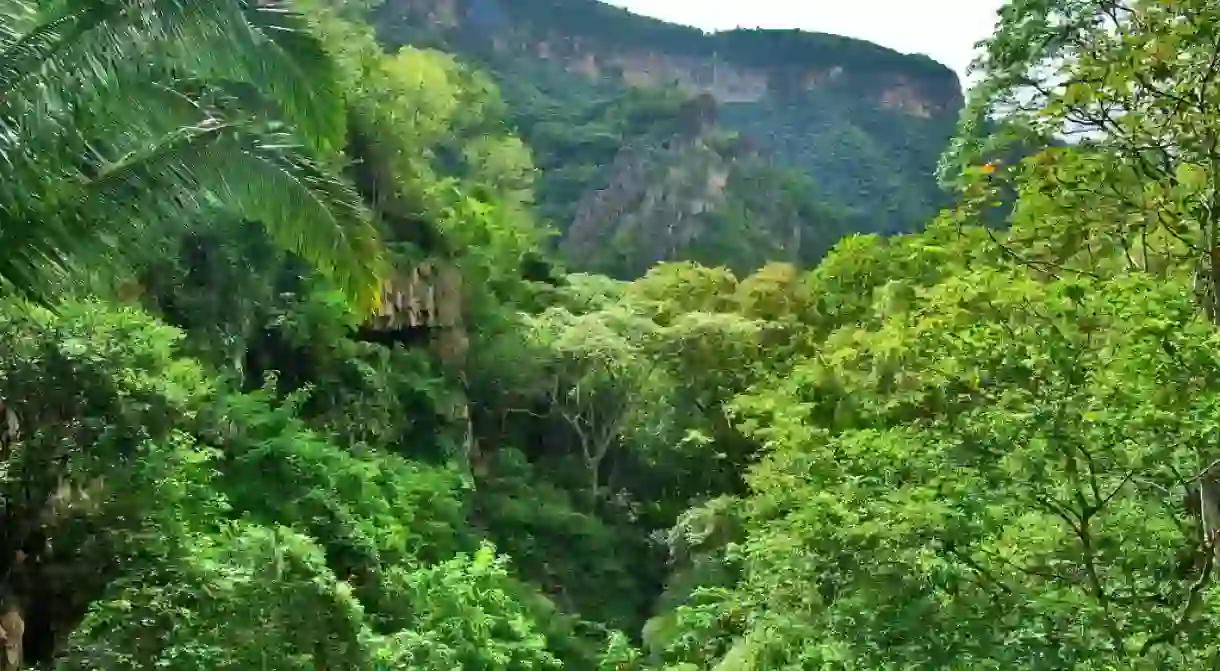The Ultimate Guide to Brazil's Ubajara National Park

The smallest of all of Brazil‘s national parks, Ubajara is a cosy haven of wildlife and wilderness in the country’s north-east. With birds and mountain animals, as well as a mountainside grotto and tumbling waterfalls, the park makes for a fascinating visit. Check out our guide to this protected slice of Brazil.
Background
The Parque Nacional de Ubajara is located 320 km (199 miles) west of Fortaleza in the state of Ceará. It is made up of just over 6,200 hectares of mountainous wilderness, reached by a small entrance a few kilometres from the town of Ubajara. The land was inhabited by the Tabajaras indians until Pero Coelho de Souza arrived in 1604 in an attempt to conquer the fertile land, pacify the indigenous people and develop their villages. Over the years, families have come and gone, withstanding fires and droughts along the way. In 1959 the area was given national protection and it is now open to the public.
http://instagram.com/p/BTe6MR3gcsB/?taken-at=508392208
Caves
As well as a dramatic and steep 820 metre (2,690 feet)-high escarpment, the main attraction in the park is its eponymous grotto. There is a series of nine chambers made out of limestone reaching back half a kilometre (1,640 feet) into the hill. Over hundreds of years the stone has formed intricate and impressive stalactites and stalagmites inside the caves. Pedra do Sino, one of the first caves visitors reach, makes a reverberating sound when it is hit with force. Gruta de Rosa (Rose cave), do Cavalo (Horse cave) and dos Retratos (Portrait cave) are among the most impressive.

Cable cars
Half of the fun of visiting the park is riding the cable car to the grotto. The ten-person cabins take an hour to wind down through the valley, giving panoramic views over the spectacular scenery. Hikers can take a 7 km (4.3 miles), three-hour-long trail through the forest accompanied by a guide from IBAMA, Brazil’s environment agency. The guides leave from the entrance on the hour, from 8am-10am. Hikers can then return by cable car, which runs until 4pm Tuesday-Sunday and costs R$2 each way.

Waterfalls and wildlife
Three of Ubajara’s waterfalls are over 70 metres (230 feet) high. The hike up to Cachoeiras do Cafundó, Gavião and Murimbeca give breathtaking views out over the green canopy of the park and to Brazil’s north-east beyond. Some of the tree cover in the park is similar to the Amazon, with species like cedar and yellow wood growing, while other parts of the park are home to jatobá, angico and quince trees. Birds and monkeys abound, as do insects (on that note, be sure to take repellent). Reptiles such as iguanas and the occasional snake all call the park home. Oncillas, a type of cat, and cougar mountain lions live in the area too – though you will need an eagle eye to spot one.
http://instagram.com/p/BUvXyFJDXOK/?taken-at=508392208
Travel and accommodation
Your can arrive in Ubajara town by either by car or bus. A number arrive each day from Fortaleza, Jericoacoara, Teresina and Paraíba. There are a very acceptable selection of simple pousada hostels and hotels in the town, as well as a few restaurants and shops. Given the climate, there is no bad time to visit – in fact, as the park is relatively high, it is often cooler then parts lower down with the temperature varying from 19°C-28°C (66°F-82°F). Wear sturdy trainers or hiking boots to walk the trails, take plenty of water and, of course, your swimsuit for the waterfalls.
http://instagram.com/p/BTn82GtlUAF/?taken-at=508392208













